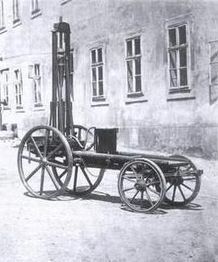May 23 2014
Are Silos The Root of All Evil? | Bill Waddell thinks so
See on Scoop.it – lean manufacturing

We all know bureaucratic horror stories associated with functional silos, like the manufacturing company where Sales, Engineering, Manufacturing and Accounting all had different product nomenclatures. Not only did they have multiple names for the same products, but they grouped them into families differently, so that it was impossible to get aggregate measures of anything.
In light of this, it is tempting to just dissolve these departments and reorganize along the lines of what Wickham Skinner called “focused factories,” Hammer and Champy “business processes,” and Womack “Value Streams.” The idea has been around a while.

According to Mary Walton’s account of the development of the Taurus 1996 in Car, this is what Ford did at the time. and it cut the development time down to 30 months. According to Sobek, Liker, and Ward, however, this is NOT what Toyota did, and it was developing cars in 24 months with functional departments exchanging memos!

In addition, the Taurus 1996, while undeniably an artistically unique design, did not set the market on fire and included body parts that were difficult to stamp out of sheet metal, Walton’s book suggests that the marketing and manufacturing members of the team, having completely transferred their allegiance to the team , failed to make it give due considerations to the needs of the groups they came from.
This suggests that, while often a good idea, collocating all the participants in a business endeavor and breaking all the functional departments is not a panacea.
Sometimes it is technically impossible, because, for example, the functional department is operating a monumental machine that you don’t know how to break down into smaller units that could be distributed among different “value streams.”
Sometimes, you can’t do it for operational reasons. For example, you don’t distribute Shipping and Receiving among the different production lines in the same building, because it would require more docks and access roads, and it would make truck drivers deliver to different organizations at multiple points around the same building.
Sometimes, you end up having specialists report to managers who have no understanding of what they need to be effective, and can’t evaluate their requests for equipment, training, or permission to attend a conference.
Sometimes, you locate an engineer who needs a quiet space to concentrate on technical issues next to a boisterous sales rep who speaks on the phone all day…
Unfortunately, I don’t think all evil has just one root. It’s a bit more complicated.
See on www.idatix.com



Jun 1 2014
Reduce maintenance costs? yes please – immediately | Wiegand’s Watch
What I read in Wiegand’s words is the focus of improvement in Maintenance should not be on structures and tools but on purpose. We maintain production facilities not to comply with a mandate or fulfill formal requirements but because it allows us to deliver goods to customers without large safety stocks. You might add that, if your products are custom, or even if you just have high variety, there is no way you can hold stocks large enough to deliver promptly.
In most companies, “Lean Maintenance” is taken to mean TPM and, within TPM, the only component that is implemented in the most basic, autonomous maintenance. The headings for the higher levels of TPM include equipment improvement, quality maintenance, and maintenance prevention but, even in Japan, you often hear managers say “We looked into implementing these, but decided they were not worth the cost.”
When you stick with autonomous maintenance, you have an approach to how the work is done but not what it is. This is a whole other topic. Wiegand states as the goal of maintenance to make interruptions of service less frequent and shorter. This is exactly what United Airlines focused on in the late 1960s when the Boeing 747 was introduced, and they called in “Reliability-Centered Maintenance” (RCM).
As part of this effort, they discovered that the “bathtub curve” of failure rates — that staple of reliability textbooks — only applies to about 4% of the aircraft components. In particular, many exhibited no tendency to fail more when aging, which made policies of periodic replacement pointless. They also developed the technique of Failure-Mode-Effect-Analysis (FMEA), on the basis of which they set policies for systematic replacement and spare parts stocks, and selected some items for targeted redundancies.
RCM was later adopted in nuclear power and process industries, and some RCM thinking has found its way into machine-shops, for example in the form of redundant tools in machining center pockets.
The criticism of RCM that I have heard is that it is a workaround to the limitations of the equipment rather than an improvement of it. It is better to have a cutting tool that lasts twice as long than to put a redundant tool on standby in the machine but then, you have to find such a tool.
Wiegand also seems to think that failures are not a problem when you have multiple, interchangeable machines with overcapacity. Technically, that’s unquestionable, but it is another story from the human point of view. It won’t be a problem next week, but what happens over time when overcapacity in an area allows you to have 25% of your equipment down? Your performance will eventually settle at a point where you actually have one machine in four down at any time. Why bother keeping all of them up all the time when they are not needed? Settling for this low availability, however, turns this process into a bottleneck.
Share this:
Like this:
By Michel Baudin • Blog clippings 2 • Tags: Bodo Wiegand, Germany, Maintenance, Predictive Maintenance, RCM, Reliability Centered Maintenance, TPM